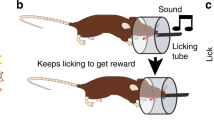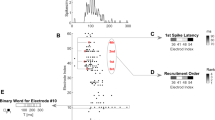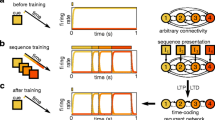Abstract.
Simple exposure to repeatitive stimulation is known to induce short-term learning effects across a wide range of species. These effects can be both suppressive and facilitatory depending on stimulus conditions: repeatitive presentation of a weak stimulus decreases the strength of the response (habituation), whereas presentation of a tonic stimulus following a series of weak stimuli transiently increases the response strength (dishabituation). Although these phenomena have been comprehensively characterized at both behavioral and cellular levels, most existing models of nonassociative learning focus exclusively on the suppressive or facilitatory changes in response, and do not attempt to relate cellular events to behavior. I propose here a feedforward model of habituation effects that explains both suppressive and facilitatory changes in response relying on the interaction between excitatory and inhibitory processes that develop in parallel on two different timescales. The model's properties are used to explain the rate sensitivity property of habituation and recovery and stimulus dishabituation.
Similar content being viewed by others
Author information
Authors and Affiliations
Additional information
Received: 1 June 2001 / Accepted in revised form: 4 December 2001
Rights and permissions
About this article
Cite this article
Dragoi, V. A feedforward model of suppressive and facilitatory habituation effects. Biol Cybern 86, 419–426 (2002). https://doi.org/10.1007/s00422-001-0306-x
Issue Date:
DOI: https://doi.org/10.1007/s00422-001-0306-x




